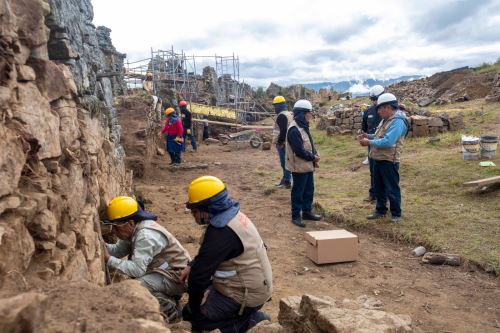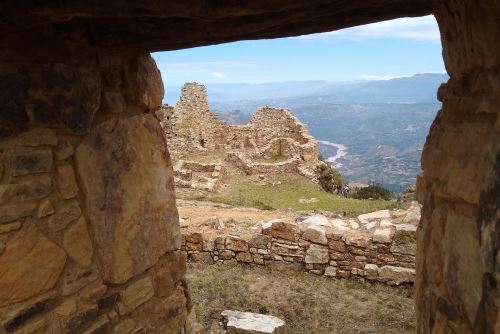13:01 | Sanchez Carrion (La Libertad region), Jul. 10.
Human and animal bone remains, silver, copper, and gilded metal pieces —associated with utensils possibly linked to goldsmithing— were found along with ceramic fragments of the Huamachuco and Cajamarca styles in the Monumental Archaeological Zone of Marcahuamachuco, located in Sanchez Carrion province, La Libertad region, northern Peru.
The
Ministry of Culture revealed that
conservation and archaeological research work was carried out in the Monumental Archaeological Zone of Marcahuamachuco, with an investment of S/1,958,175 (about US$552,221).
"This project aims to preserve one of the strategic areas of the complex, considered key to understanding the architectural and cultural development of the Huamachuco civilization," the government agency emphasized.

The Ministry of Culture highlighted that this work led to the recording of highly significant findings.
Likewise, it reported that architectural structures were also identified beneath the surface, further expanding knowledge about the site's complexity.
"One of the most significant discoveries is a set of obsidian points in various rainbow hues, translucent mahogany, and black—along with hand grinders, grinding stones, discs, and anvils, which provide evidence of complex manufacturing activities," it stated.
In this regard, Cesar Perez, head of Executing Unit 007 Marcahuamachuco, said that "these discoveries expand the existing information about the occupation and use of space in Marcahuamachuco; in this sense, they reinforce and complement previous archaeological interpretations of the cultural, ritual, and productive practices carried out at this important pre-Hispanic center."
The materials found are currently undergoing conservation and research to deepen their functional and contextual analysis.
Additionally, the newly identified architectural areas will be incorporated into the interpretative circuit of the archaeological monument, strengthening its potential as a cultural destination.
Lastly, the Ministry of Culture indicated that through these actions, it reaffirms its commitment to the protection, enhancement, and dissemination of cultural heritage, positioning Marcahuamachuco as one of the fundamental benchmarks for archaeological research and the country's cultural identity.
What is Marcahuamachuco?
This monument is the largest and most important archaeological site in the northern highlands of Peru.
Located 9.5 kilometers northwest of the city of Huamachuco (capital of Sanchez Carrion province), it sits at an altitude of 3,750 meters above sea level, on a 250-hectare plateau measuring 5 kilometers long and 500 meters wide.

The origins of this culture date back to the year 350 A.D. and lasted until 1100 A.D.
As a metropolis, Marcahuamachuco represented the highest expression of development and progress of the Huamachucos. It also served as a pilgrimage center where people periodically came to worship their ancestors and tutelary gods.
The archaeological site presents several stages of occupation. Its walls are built over perilous cliffs and deep ravines. The construction material consists of carved stone secured with wedges and joined with clay mortar.
Among these structures are ovoid (circular) towers that reach heights exceeding 10 meters, and are among the tallest in the northern highlands of Peru.
World Heritage
The aforementioned United Nations body highlights that this monument is the highest expression of religiosity in that culture, as it contains the finest examples of its religious architecture, along with complementary buildings that made possible major ceremonies, which contributed to the extraordinary administrative and political management of the territory under its influence.

(END) NDP/MAO/JMP/MVB
Publicado: 10/7/2025